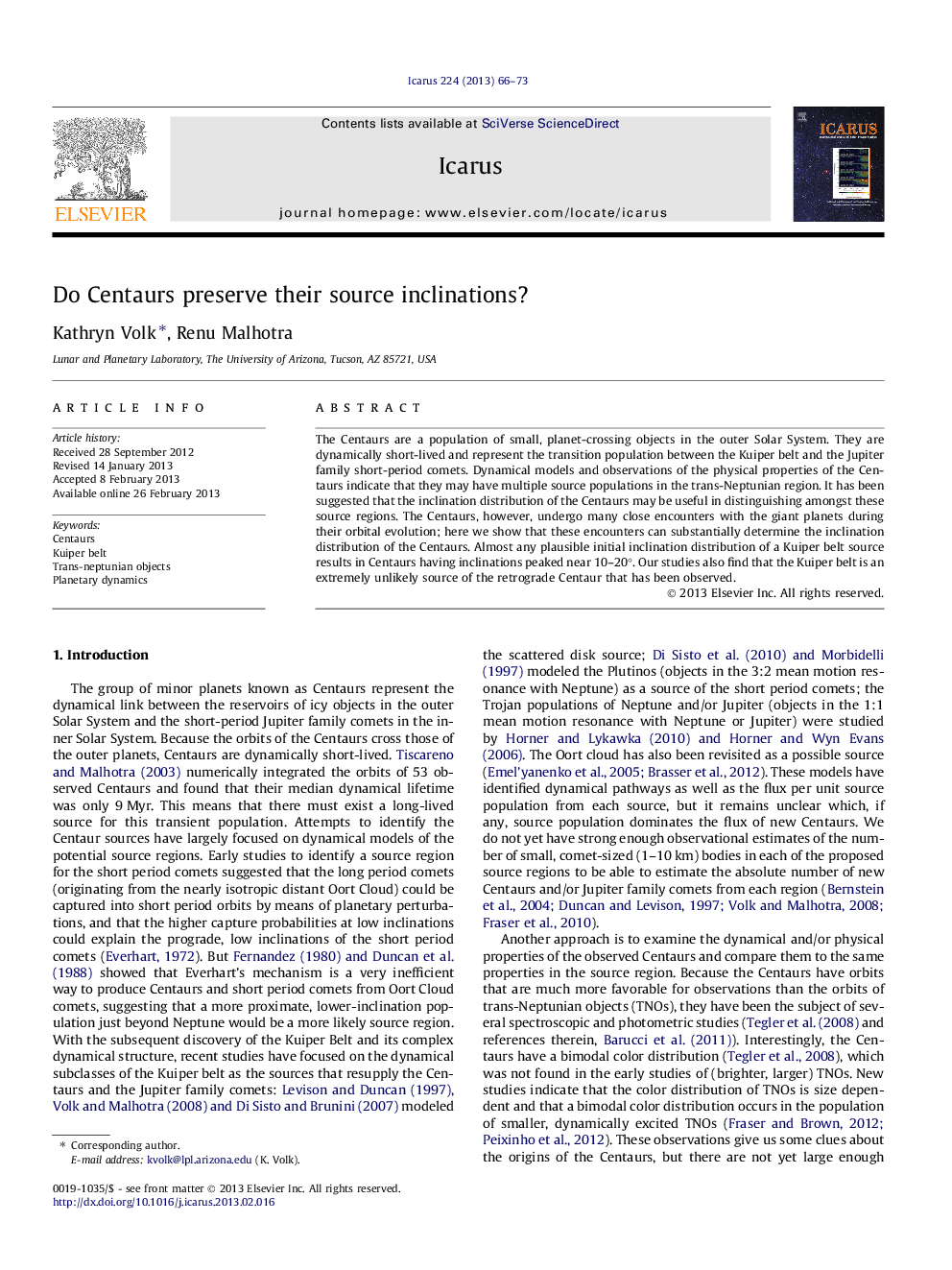| Article ID | Journal | Published Year | Pages | File Type |
|---|---|---|---|---|
| 1773530 | Icarus | 2013 | 8 Pages |
The Centaurs are a population of small, planet-crossing objects in the outer Solar System. They are dynamically short-lived and represent the transition population between the Kuiper belt and the Jupiter family short-period comets. Dynamical models and observations of the physical properties of the Centaurs indicate that they may have multiple source populations in the trans-Neptunian region. It has been suggested that the inclination distribution of the Centaurs may be useful in distinguishing amongst these source regions. The Centaurs, however, undergo many close encounters with the giant planets during their orbital evolution; here we show that these encounters can substantially determine the inclination distribution of the Centaurs. Almost any plausible initial inclination distribution of a Kuiper belt source results in Centaurs having inclinations peaked near 10–20°. Our studies also find that the Kuiper belt is an extremely unlikely source of the retrograde Centaur that has been observed.
► We determine how planetary encounters change the inclinations of Centaurs. ► Encounters can significantly alter the Centaurs’ inclination distribution. ► High-i features of the source region are better preserved than low-i features. ► Planetary encounters are not an efficient way to produce extremely high-i Centaurs.
